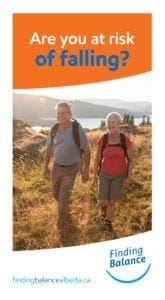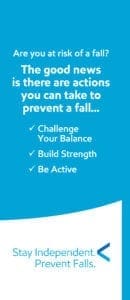Fall is a leading public health issue across age groups and settings in Alberta. According to AHS, in 2022, 154,004 Albertans visited emergency and urgent care and 17,489 Albertans were hospitalized due to a fall. Falls can happen at home, at school, in recreation and leisure, in sports, in the community, at work and even on vacation.
We collected some resources for preventing falls. We hope you find them useful
Are you at risk of falling?
For older adults, falls are the leading cause of injury. To reduce your chances of falling you need to:
Challenge Your Balance
- Balance is controlling your movements.
- Practice movements like reaching while standing, toe and heel raises, stepping in different directions, step-ups or half-squats.
- Try tai chi, yoga or sports that challenge your balance.
Build Strength
- Do exercises for your leg muscles.
- Use bands, weights or your own body weight.
- Try squats, hamstring curls, and side leg lifts
Be Active
- Do activities you enjoy!
- Try to do 30 minutes or more of moderate to vigorous activity or exercise at least 5 times per week.
- Walk, dance, garden, bicycle, or swim.
Could A Fall Change Your Lifestyle?
20-30% of older Albertans fall each year. After a fall, many are unable to live the way they want to. Know your risks! Your healthcare provider can help you identify reasons related to your health or environment that can cause you to fall.
- Have your vision checked every year for changes to your eyesight, cataracts, and other conditions.
- Medications for sleep, anxiety, and treating depression can make you dizzy or sleepy and unstable on your feet. Review your medications with a doctor or pharmacist.
- Supportive footwear and foot care can ease foot pain. In the winter, wear anti-slip devices on your footwear.
- Make your home safer by removing tripping hazards, improve lighting. An occupational therapist can help.
If it seems you have fallen for no apparent reason, you may have a medical condition that needs to be addressed by a doctor.
Footwear And Footcare Tips For Older Adults
As you age, taking care of your feet and wearing proper footwear are important to help prevent falls. Feet that are healthy and pain-free can help you keep your balance. Remember to:
- Wash your feet in warm water.
- Dry your feet completely after washing, especially between your toes.
- Trim your toenails straight across and not too short.
- When sitting, put your feet up on a stool to decrease swelling.
- Check your feet often for corns, open sores, redness, dry skin, and thickened nails.
- Ask for help or use a mirror to see your feet.
PROPER FOOTWEAR
Taking care of your feet and wearing proper footwear are important to help prevent falls. Feet that are healthy and pain-free can help you keep your balance. Here are some tips for you to take care of your feet and choose a pair of proper shoes.
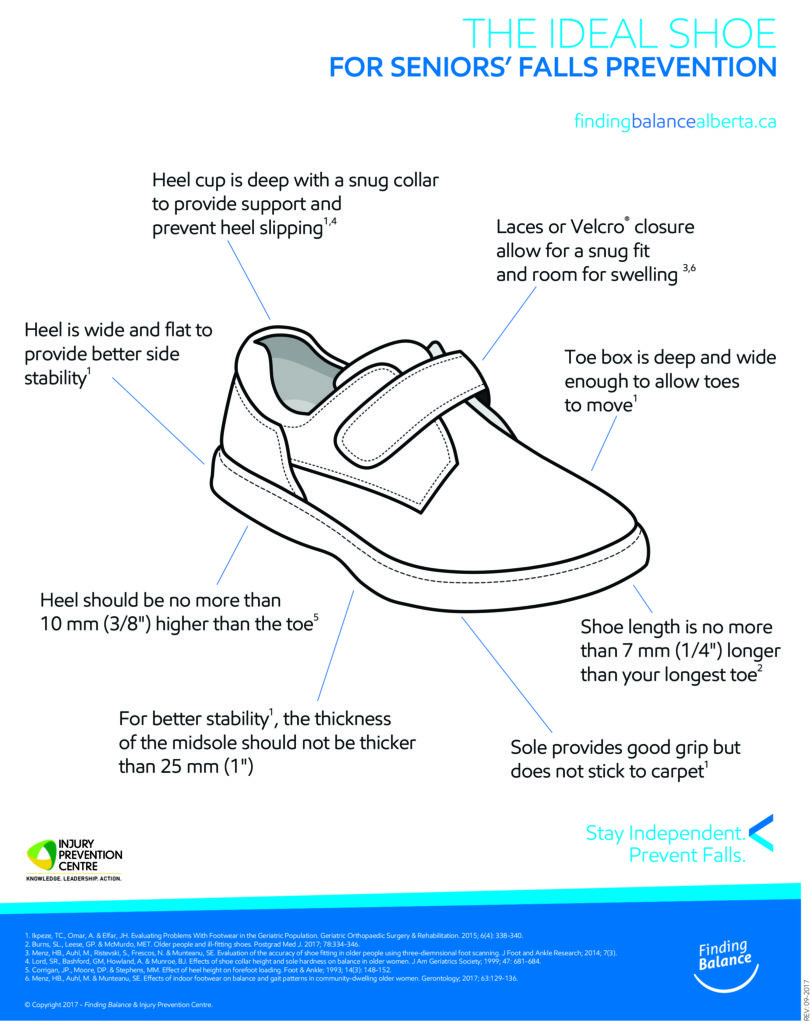
How To Get Up By Yourself After A Fall
• Remain calm and stay on the ground.
• Check your body.
• If you are injured, call for help. Stay warm.
• If you are not injured, look for a sturdy piece of furniture.
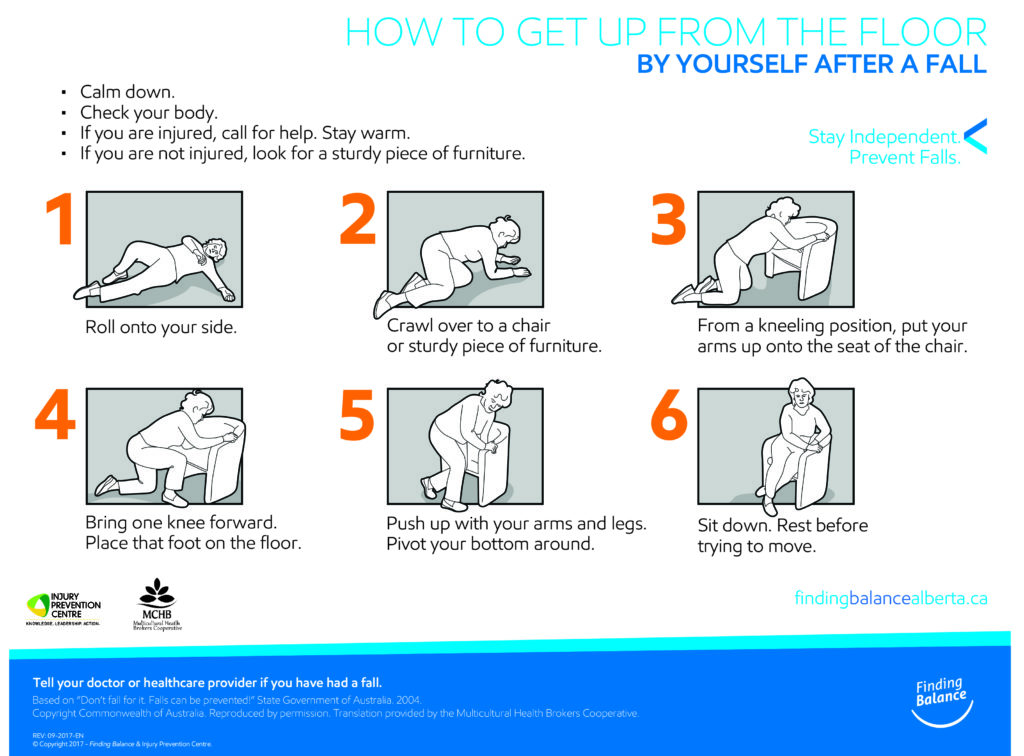
Try a Home Exercise Routine
For strength, use resistance bands, weights, or your own body weight. For balance, practice movements like:
• reaching while standing
• toe and heel raises
• stepping in different directions
• step-ups
• half-squats.
Other Resources from findingbalancealberta.ca
Download the Everyday Exercises For Older Adults
Download the Exercise Tips For Older Adults
People with strong legs and good balance are less likely to fall. No matter what your abilities are today, you can improve your strength and balance. Use this guide to create your own exercise routine!
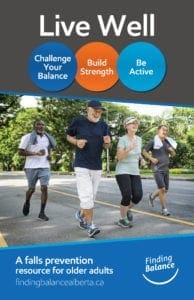
Band Exercises For Older Adults
Exercising with resistance bands is a great way to build strength in all parts of your body – legs, arms, and core. Bands are portable and inexpensive. You can use them at home, outdoors, or at the gym. Building strength with bands is safe and effective and will:
- Reduce your risk for falls
- Improve your physical capabilities
- Deter some chronic diseases
Generally, increasing your strength will lessen the symptoms of aging. (Seguin et at. 2003). Almost anyone can exercise with bands. If you:
- have talked with your healthcare provider about exercising
- have been regularly doing some exercises and/or activities
- have enough strength in your hands to hold a band securely,
then you are ready to exercise with bands.
Be Active
- Adults aged 65 years and older should accumulate at least 150 minutes of moderate to vigorous intensity aerobic physical activity per week in bouts of 10 minutes or more.
- Plus, it is beneficial to add muscle and bone strengthening activities, like exercising with bands, at least 2 days per week.
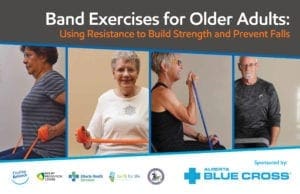
Fall Prevention Resources
All of the information above is from the Alberta Health Services Fall Prevention initiative. For more information on fall prevention, visit the findingbalancealberta.ca website
